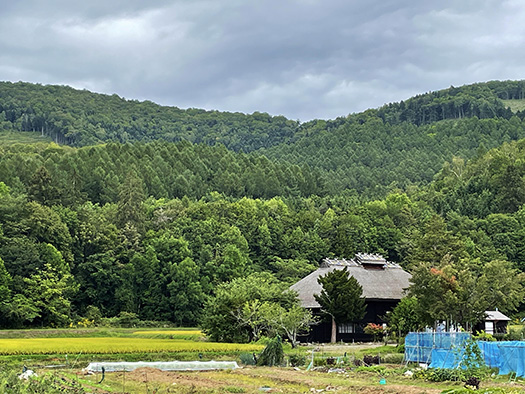
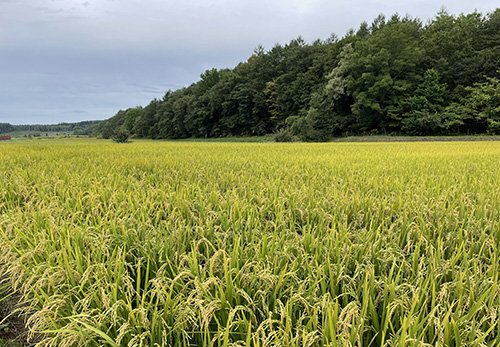
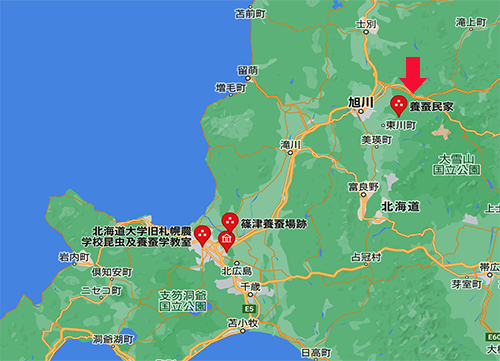
1909年建設という旭川の奥、東旭川にある養蚕民家。
本州地域ではこの程度の築年の建築は多数あるけれど、
明治以降の開拓史しかない北海道では、十分に「古民家」といえる。
この建物は旭川市指定文化財となっている。
先般来、群馬県前橋市の養蚕の古民家を取材したことから
その建築要件として蚕というイキモノの生態に最適化された建築が要請され
北海道での高断熱高気密という「住宅性能」探究の異形のルーツとして
この「養蚕民家」について興味を持つに至った。
高い天井高の大空間志向、室温環境の安定と暖房効率の追求、
適度な「通気性」のコントロールなど、通底する要素技術が垣間見えた。
前橋の養蚕民家のブログ記事を見ていただいた住宅研究者の方から
この旭川郊外の「養蚕民家」の情報を頂き、ちょうど旭川の現代住宅取材の
機会も同時にあった(既述)ので、前倒しで訪問して撮影取材した次第。
地図で北海道に残る「養蚕業」の痕跡を示してみた。
テーマとしても養蚕業というものが明治から昭和にかけた時代の
大きな「産業」要素でもあり、農業開拓の大きな柱でもあったこともあり、
また、当時の住宅性能的な試行努力の痕跡としても興味をそそられる。
そんなことで「養蚕民家」について連載ブログで探索したい。
この東旭川地域は明治31年以降に福島県から集団移住して開拓された。
第1回の集団移住者が入植したのは5月3日とされ、地元の大田神社では
この日を春祭りとして祝っているのだという。
いまでこそ一帯は豊かな田園風景が広がっているけれど、
入植時はなかなか開墾が進まず、洪水などの悪条件も重なって
困難な生活を強いられたと言うことですが、
明治39年の道庁の「開拓成功検査」では
「長年月の悲境にも屈せず刻苦忍耐ついに今日の成功を致せり」と賞されている。
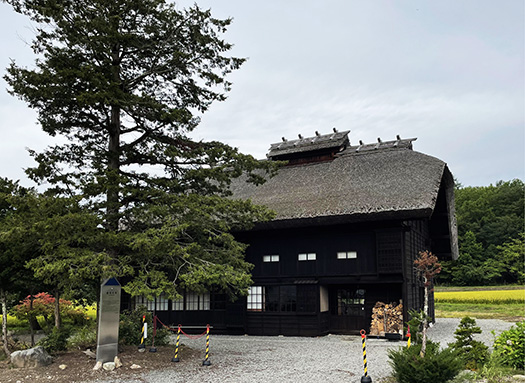
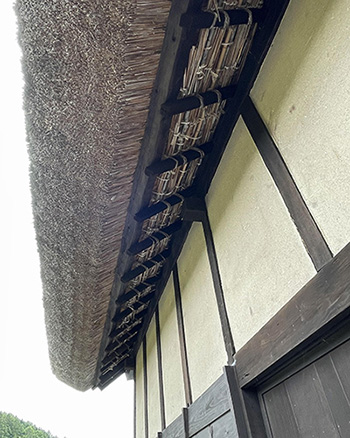
北海道の地域としての養蚕業にとっても、この東旭川の事例は
大きな成功例であったことがうかがえます。
日本の養蚕業は明治開国時期、欧米の絹繊維ファッション需要に対して
最初期の横浜からの主要輸出産品としての地位を確立していた。
欧米先進社会に対してアジアの国が資本主義ネットワークに参入するのに
もっともキモになった産業だったことがわかる。
明治以降、第2次世界大戦までの70年あまりの時代に
日本人口は2.5倍増くらいに大幅増加で推移する。
江戸期の250年間で1,800万人から3,000万人にしか
人口増加しなかったことを考えると、経済発展こそが歴史を動かすのだと思う。
養蚕業自体はその後の「化学繊維」の発展によって歴史的使命を終える。
その変化を主導した倉敷・大原家の「民藝建築」もすでに見た。
住宅建築・古民家探訪を通して産業の興亡の断面もみる思い。<以下、あすへ>
English version⬇
The pioneering spirit that bet on sericulture 113 years ago: Sericultural houses in Higashi-Asahikawa-1
After the Meiji era, many immigrants from Honshu dreamed of success in Hokkaido. The passion for the industry and the traces of their pursuit of housing performance are explored. The spirit of the pioneers who bet on sericulture
Built in 1909, this silkworm-raising house is located in Higashi-Asahikawa, deep in Asahikawa.
In the Honshu region, there are many buildings of this age, but in Hokkaido, which has only been settled since the Meiji period, they are considered “old minka.
In Hokkaido, which has only been pioneering since the Meiji era (1868-1912), this house is considered old enough to be an “old minka”.
This building is designated as a cultural asset by Asahikawa City.
I recently visited Maebashi City, Gunma Prefecture, to report on an old sericultural house.
The building’s architectural requirements are optimized for the ecology of silkworms.
As the root of my exploration of “housing performance” of high heat insulation and high airtightness in Hokkaido, I have been interested in this “silkworm minka”.
I became interested in this “silkworm-raising minka” as the root of my search for “housing performance” in Hokkaido, which is highly insulated and airtight.
The house is oriented toward large spaces with high ceilings, pursuit of a stable room temperature environment and heating efficiency, and control of adequate “air permeability.
I could catch a glimpse of the elemental technologies that are commonly used throughout the house, such as the control of adequate “ventilation”.
A housing researcher who read my blog post about a silkworm-raising house in Maebashi told me about this “silkworm-raising house” in the suburbs of Asahikawa, Japan.
I received information about this “sericultural minka” in the suburbs of Asahikawa from a housing researcher who had read my blog post on the silkworm farmhouse in Maebashi.
I visited the house ahead of schedule to take photos and report on it.
The map shows the traces of “sericultural industry” in Hokkaido.
As a theme, sericulture was a major “industrial” element of the period from the Meiji Era to the Showa Era.
It was also a major “industrial” element of the period from the Meiji era to the Showa era, and was a major pillar of agricultural development.
Also, the traces of trial and error in housing performance at that time are intriguing.
This is why I would like to explore the “sericultural minka” in this series of blogs.
The Higashi-Asahikawa area was settled by a mass migration of people from Fukushima Prefecture after 1898.
It is said that the first mass immigrants settled in the area on May 3, and the local Ota Shrine celebrates the day as a spring festival.
This day is celebrated as a spring festival at the local Ota Shrine.
Although the area is now a lush rural landscape, it was not easy to cultivate the land at the time of the settlement.
However, at the time of settlement, cultivation of the land did not progress well, and floods and other adverse conditions also occurred.
The settlers were forced to live in difficult conditions due to floods and other adverse factors.
In 1906, the Provincial Government’s “Inspection of Success in Cultivation” stated
However, in the “Success Inspection of Pioneering” conducted by the Provincial Government in 1906, it was praised as “Success today has been achieved through perseverance and hardship, not giving in to adversity over many years.
The case of Higashi-Asahikawa is a rare success story for the sericulture industry in Hokkaido.
The sericultural industry in Japan was a rare example of success.
The Japanese sericultural industry had established itself as a major export product from Yokohama in the early days of the Meiji era, when the country opened to Western demand for silk fiber products.
The Japanese sericultural industry had established itself as a major export product from Yokohama in the early days of the Meiji era.
It was the most important industry for Asian countries to enter the capitalist network against the advanced Western societies.
The industry was the most important factor in the entry of Asian countries into the capitalist network against the advanced societies of the West.
In the 70-odd years from the Meiji era to World War II, the Japanese population grew by 2.5 percent.
The number of Japanese people increased by a factor of 2.5.
Considering that the population only grew from 18 million to 30 million during the 250 years of the Edo period
Considering that the population only increased from 18 million to 30 million during the 250 years of the Edo period, economic development is what drives history.
The sericultural industry itself ended its historical mission with the subsequent development of “synthetic fibers.
We have already seen the “folk art architecture” of the Ohara family of Kurashiki, who led this change.
Through the exploration of residential architecture and old private homes, I would like to look at a cross-section of the rise and fall of the industry. <See you tomorrow.
Posted on 9月 14th, 2022 by 三木 奎吾
Filed under: 住宅マーケティング, 古民家シリーズ







コメントを投稿
「※誹謗中傷や、悪意のある書き込み、営利目的などのコメントを防ぐために、投稿された全てのコメントは一時的に保留されますのでご了承ください。」
You must be logged in to post a comment.